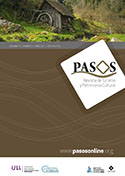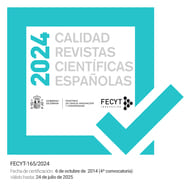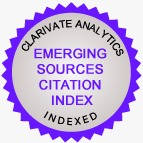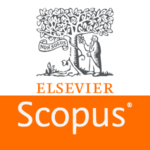Turismo e desenvolvimento local
DOI:
https://doi.org/10.25145/j.pasos.2017.15.021Palavras-chave:
turismo, turismo interno, desenvolvimento, desenvolvimento local, pobrezaResumo
O turismo é o motor do desenvolvimento local nas zonas rurais, como demonstra a experiência do município de San Francisco Zapotitlán, no departamento de Retalhuleu, Guatemala, onde está localizado o centro recreativo do IRTRA, que recebe tantos visitantes quanto turistas estrangeiros no país. Este município registou uma redução significativa, superior à dos outros municípios, no nível de incidência da pobreza entre 1998 e 2006. A hipótese suportada neste artigo é que esta queda está associada ao derrame económico gerado pelo turismo, especialmente o turismo doméstico. A fim de verificar essa hipótese, é feito um contraste da diferença de médias proporcionais, do município analisado em relação aos outros municípios do departamento, em relação ao nível de pobreza e sua redução. Os resultados não nos permitem rejeitar a hipótese formulada.
Downloads
##plugins.generic.pfl.publicationFactsTitle##
##plugins.generic.pfl.reviewerProfiles## Indisp.
##plugins.generic.pfl.authorStatements##
##plugins.generic.pfl.indexedIn##
-
##plugins.generic.pfl.indexedList##
- ##plugins.generic.pfl.academicSociety##
- PASOS. Revista de Turismo y Patrimonio Cultural
- ##plugins.generic.pfl.publisher##
- Instituto Universitario de Investigación Social y Turismo. Universidad de La Laguna (España) - Instituto Universitario da Maia ISMAI (Portugal)
Referências
Aguirre, J. 2008. Midiendo el impacto económico del gasto turístico de los visitantes a los parques nacionales de Costa Rica. Pasos. Revista de turismo y patrimonio cultural, 6:1, (11-26).
Albuquerque, F. 2003. Curso sobre desarrollo local. Madrid: Instituto de economía y geografía.
Alburquerque, F. 2008. Desarrollo local y empleo. Ginebra: Organización Internacional del Trabajo.
Banco Mundial 2006. Desarrollo económico local: un instructivo para el desarrollo y la implementación de las estrategias y planes de acción de desarrollo económico local. Washington: Autor.
Baldárrago, E. 2007. Turismo y desarrollo económico local: El caso del cañón de Colca en la provincia de Caylloma- -Arequipa. Disponible en: http://www.old.cies.org.pe/files/documents/investigaciones/empresa-y-finanzas/ turismo-y-desarrollo-economico-local-el-caso-del-canon-del-colca-en-la-proincia-de-caylloma-arequipa.pdf
Grupos Gestores 2013. El comercio interno de Guatemala. Guatemala: Autor.
Instituto Nacional de Estadística. (2011). Encuesta nacional de condiciones de vida. Guatemala: Autor.
IRTRA 2015. Parques IRTRA. Disponible en http://irtra.org.gt/parques/
Meier, G. y Stiglitz. J. (Ed.) 2001. Fronteras de la economía del desarrollo. El futuro en perspectiva. Bogotá: Alfaomega.
Pike, A., Rodríguez, A., y Tomaney, J. 2011. Desarrollo local y regional. Valencia: Universidad de Valencia.
Quan, G. 2007. Desarrollo Humano: una introducción conceptual. Guatemala: PNUD.
Ray, D. 2002. Economía del desarrollo. Madrid: Antoni Bosch.
Romero, W. y Zapil, S. 2009. Dinámica territorial del consumo, la pobreza y la desigualdad en Guatemala 1998-2006. Documento de trabajo No. 51, Programa Dinámicas Territoriales Rurales. Santiago de Chile: IDIES-URL / RIMISP.
SEGEPLAN 2010. Plan de desarrollo. San Francisco Zapotitlán. Guatemala: Autor.
Tello, M. 2006. Las teorías del desarrollo económico local y la teoría y práctica del proceso de descentralización en los países en desarrollo. Disponible en: http://departamento.pucp.edu.pe/economia/images/ documentos/DDD247.pdf
UNCTAD 2013. Turismo sostenible: Contribución del turismo al crecimiento y desarrollo sostenible. Disponible en: http://unctad.org/meetings/es/SessionalDocuments/ciem5d2_sp.pdf
Vásquez, A. 2007. Desarrollo endógeno. Teorías y políticas de desarrollo local. Investigaciones regionales, 11, (183-210).
Vellas, F. 2011. The indirect impact of tourism: An economic analysis. Disponible en: http://www2.unwto.org/ agora/indirect-impact-tourism-economic-analysis.
WTTC 2003. Turismo y atenuación de la pobreza. Madrid: Autor.
WTTC 2014. Travel & tourism. Economic impact 2014. Guatemala. London: Autor.
Alebaki, M. and Iakovidou, O. 2011. “Market segmentation in wine tourism: a comparison of approaches”. Tourismos: An International Multidisciplinary Journal of Tourism, 6(1), pp. 123-140.
Anderson, K. and Wittwer, G. 2015. “Asia’s Evolving Role in Global Wine Markets” China Economic Review, 35, pp. 1-14.
Awasthi, A., Chauhan, S. S. and Goyal, S. K. 2011. “A multi-criteria decision making approach for location planning for urban distribution centers under uncertainty”. Mathematical and Computer Modelling, 53, pp. 98-109.
Bagozzi, R. P. 2011. “Measurement and Meaning in Information Systems and Organizational Research: Methodological and Philosophical Foundations”. MIS Quarterly, 35(2), pp. 261-92.
Barral, M. R. A. and Bolio, M. T. 2001. “Rutas, museos e itinerarios vitícolas España-Latinoamérica”. Douro – Estudos & Documentos, 6(11), pp. 227-237.
Bellman, R. E. and Zadeh, L. A. 1970. “Decision-making in a fuzzy environment”. Management Science, 17(4), pp. 141–164.
Benítez, J. M., Martín, J. C. and Román, C. 2007. “Using fuzzy number for measuring quality of service in the hotel industry”. Tourism management, 28(2), pp. 544-555.
Blake, A., Sinclair, M. T. and Soria, J. A. C. 2006. “Tourism productivity - Evidence from the United Kingdom”. Annals of Tourism Research, 33(4), pp. 1099-1120.
Brida, J. G., Lanzilotta, B., Pereyra, J. S. and Pizzolon, F. 2015. “A nonlinear approach to the tourism-led growth hypothesis the case of the MERCOSUR”. Current Issues in Tourism, 18(7), pp. 647-666.
Bruwer, J. and Alant, K. 2009. “The hedonic nature of wine tourism consumption: an experiential view”. International Journal of Wine Business Research, 21(3), pp. 235-257.
Canalejo, A. M. C. and Guzmán, T. L. 2011. “Enoturismo y desarrollo económico, un estudio de caso en Cabo Verde (África)”. Papeles de Geografia, (53-54), pp. 65-76.
Carlsen, J. 2004. “A review of global wine tourism research”. Journal of Wine Research, 15(1), pp. 5-13.
Charters, S. and Ali-Knight, J. 2002. “Who is the wine tourist?”. Tourism Management, 23(3), pp. 311-319.
Chen, C. T. 2000. “Extensions of the TOPSIS for group decision-making under fuzzy environment”. Fuzzy Sets and Systems, 114(1), pp. 1-9.
Cohen, S. A., Prayag, G. and Moital, M. 2014. “Consumer behaviour in tourism: Concepts, influences and opportunities”. Current Issues in Tourism, 17(10), pp. 872-909.
Colchagua Wineries, 2013. “Colchagua Wineries”. Santa Cruz: Viñas de Colchagua. Retrieved, from: http://www.colchaguavalley. cl/en/vinas-de-colchagua/.
Coyle, D., Buxton, M. J. and O’Brien, B. J. 2003. “Measures of importance for economic analysis based on decision modelling”. J Clin Epidemiol, 56(10), pp. 989-997.
Diana, M. 2012. “Measuring the satisfaction of multimodal travelers for local transit services in different urban contexts”. Transportation Research Part A: Policy and Practice, 46(1), pp. 1–11.
Dodd, T. H. and Gustafson, W. A. 1997. “Product, environmental, and service attributes that influence consumer attitudes and purchases at wineries”. Journal of Food Products Marketing, 4(3), pp. 41-59.
Dolnicar, S. 2013. “Asking Good Survey Questions”. Journal of Travel Research, 52(5), pp. 551–574.
Dymova, L., Sevastjanov, P. and Tikhonenko, A. 2013. “A direct interval extension of TOPSIS method”. Expert Systems with Applications, 40(12), pp. 4841–4847.
Esparon, M., Stoeckl, N., Farr, M. and Larson, S. 2015. “The significance of environmental values for destination competitiveness and sustainable tourism strategy making: insights from Australia’s Great Barrier Reef World Heritage Area”. Journal of Sustainable Tourism, 23(5), pp. 706-725.
Figueira, J., Greco, S. and Ehrgott, M. 2005. Criteria decision analysis. New York: Springer.
Gammack, J. G. 2006. “Wine tourism and sustainable development in regional Australia”. In J. Carlsen, and S. Charters (Ed.), Global wine tourism: Research, management and marketing (pp. 59 - 66). Wallingford: CAB. Retrieved from International. https://vinumvine.files.wordpress.com/2011/08/jack-carlsen-stephen- -charters-global-wine-tourism-research-management-and-marketing.pdf
Getz, D. 2000. Explore Wine tourism, management, development and destinations. New York, NY: Cognizant Communication Corporation.
Getz, D. and Brown, G. 2006. “Critical success factors for wine tourism regions: a demand analysis”. Tourism Management, 27(1), pp. 146-156.
Hall, C. M., Johnson, G., Cambourne, B., Macionis, N., Mitchell, R., and Sharples, L. 2004. “Wine Tourism: An Introduction. In Hall, C. M., Sharples, L., Cambourne, B., Macionis, N. (Ed), Wine Tourism Around the World: Development, Management and Markets (pp. 1-23). Oxford: Butterworth-Heinemann.
Hall, C. M., Sharples, L., Cambourne, B. and Macionis, N. 2009. Wine tourism around the world. New York, NY: Routledge.
Ho, L. and Yi, T. 2014. “Constructing Quality of Service Indicators and Improvement Strategies for Medical Tourism in Taiwan”. Ethno Med, 8(1), pp. 23-31.
Hutchinson, M.O. 1998. “The use of fuzzy logic in business decision-making”. Derivatives Quaterly, 4(4), pp. 53-67.
Hwang, C., and K. Yoon. 1981. Multiple Attribute Decision Making: Methods and Applications. Springer-Verlag, New York.
Johnson, R. and Bruwer, J. 2007. “Regional brand image and perceived wine quality: the consumer perspective”. International Journal of Wine Business Research, 19(4), pp. 276-297.
Kahraman, C. 2008. Fuzzy Multi-Criteria Decision Making: Theory and Applications with Recent Developments. Turkey: Springer Science.
Lewis, R. C. and Booms, B. H. 1983. “The Marketing Aspects of Service Quality”. In Berry, L., Shostack, G., & Upah G. (Ed.). Emerging Perpectives on Service Marketing (pp. 99-107). Chicago. IL: American Marketing.
Liat, C. B., Mansori, S. and Huei, C. T. 2014. “The Associations between Service Quality, Corporate Image, Customer Satisfaction, and Loyalty: Evidence from the Malaysian Hotel Industry”. Journal of Hospitality Marketing & Management, 23(3), pp. 314–326.
Marzo-Navarro, M. and Pedraja-Iglesias, M. 2010. “Are there different profiles of wine tourists? An initial approach”. International Journal of Wine Business Research, 22(4), pp. 349-361
Marzo-Navarro, M. and Pedraja-Iglesias, M. 2012. “Critical factors of wine tourism: incentives and barriers from the potential tourist’s perspective”. International Journal of Contemporary Hospitality Management, 24(2), pp. 312-334.
McGovern, P. E. 2003. Ancient wine: the search for the origins of viniculture. Princeton University Press: Princeton, NJ.
Ministério do Turismo (MTur) 2010. Turismo Cultural: orientações básicas. Brasília: MTur. http://www.turismo.gov.br/sites/default/ turismo/o_ministerio/publicacoes/downloads_publicacoes/Turismo_Cultural_Versxo_Final_IMPRESSxO_. pdf (December 10, 2014).
Miolo (Miolo Wine Group) 2015. Enotourism Bento Gonçalves: Miolo Wine Group. http://www.miolo.com.br/en/enotourism/ (April 10, 2015).
Mitchell, R., Charters, S. and Albrecht, J. N. 2012. “Cultural systems and the wine tourism product”. Annals of Tourism Research, 39(1), pp. 311-335.
Molinari, G. T. and Padula, A. D. 2013. “A construção social da qualidade na microrregião do Vale dos Vinhedos”. Revista de Economia e Sociologia Rural, 51(1), pp. 183-202.
O’Neill, M., Palmer, A. and Charters, S. 2002. “Wine production as a service experience: the effects of service quality on wine sales”. Journal of Services Marketing, 16(4), pp. 342-362.
Parasuraman, A., Zeithaml, A. V. and Berry, L. L. 1985. “A conceptual model of service quality and its implications for future research”. Journal of Marketing, 49, pp. 41-50.
Payne, S. L. 1980. The Art of Asking Questions. 13th edition. Princeton: Princeton University Press.
Pedrycz, W. and Gomide, F. 2007. Fuzzy systems engineering: toward human-centric computing. New Jersey: Wiley.
Peters, G. L. 1997. American winescapes: the cultural landscapes of America’s wine country. Geographies of the imagination (USA): Westview Press.
Poitras, L., and Getz, D. 2006. “Sustainable wine tourism: the host community perspective”. Journal of Sustainable Tourism, 14(5), pp. 425-448.
Quintal, V. A., Thomas, B., and Phau, I. 2015. “Incorporating the winescape into the theory of planned behaviour: Examining new world’wineries”. Tourism Management, 46, pp. 596-609.
Roberts, L. and Sparks, B. 2006. “Enhancing the wine tourism experience: the customers’ viewpoint”. In J. Carlsen, and S. Charters (Ed.) Global wine tourism: Research, management and marketing, (pp. 47-55). Wallingford: CAB International.
Rossiter, J. R. 2011. Measurement for the Social Sciences: The C-OAR-SE Method and Why It Must Replace Psychometrics. New York, NY: Springer.
Roy, B. 1996. Multicriteria Methodology for Decision Aiding. Dordrecht: Kluwer.
Sigala, M. 2014. “Wine tourism around the world: development, management and markets”. Journal of Wine Research, 25(2), pp. 133-134.
Skinner, A. 2000. “Napa Valley, California: a model of wine region development” In C. M. Hall, L. Sharpies, B. Cambourne, and N. Macionis (Ed.), Wine tourism around the world: Development, management and markets (pp. 283-296). Oxford: Elsevier Science.
Sparks, B. 2007. “Planning a wine tourism vacation? Factors that help to predict tourist behavioural intentions”. Tourism Management, 28(5), pp. 1180-1192.
Thomas, B., Quintal, V. A. and Phau, I. 2010. “Developing a scale that measures the winescape”. In David Fortin, Lucie Ozanne (Ed.), Australian and New Zealand Marketing Academy Conference, Nov 29, 2009. Christchurch, New Zealand: Australian and New Zealand Marketing Academy.
Thomas, B., Quintal, V. A. and Phau, I. 2011. “Testing the winescape scale in Western Australia’s wine country”. In Dale Sanders and Kate Mizerki (Ed.) Australian and New Zealand Marketing Academy Conference, Nov 28, 2010. Perth, Australia: Australian and New Zealand Marketing Academy.
Tsaur, S-H., Chang, T-Y., and Yen, C-H. 2002. “The evaluation of airline service quality by fuzzy MCDM”. Tourism Management, 23(2), pp. 107-115.
Uglje, S. 2010. “Satisfaction and Behavioural Intentions of Congress Attendees: Evidence from an International Congress in Novi Sad (Serbia)”. Geographica Pannonica, 14(1), pp. 23–30.
Vale dos Vinhedos Wine Producers Association (APROVALE) 2015a. Geographical Indication. Rio Grande do Sul: APROVALE. http://www.valedosvinhedos.com.br/ vale/conteudo.php?view=70&idpai=132 (January 15, 2015) 2015b. The Valley. Rio Grande do Sul: APROVALE. http://www.valedosvinhedos.com.br/vale/conteudo. php?view=67&idpai=126 (January 20, 2015). 2015c. News. Rio Grande do Sul: APROVALE. http://www.valedosvinhedos.com.br/vale/viewdestaque. php?view=435&cnid=1#null (January 25, 2015).
Vila, T. D., Darcy, S., and Gonzalez, E. A. 2015. “Competing for the disability tourism market A comparative exploration of the factors of accessible tourism competitiveness in Spain and Australia”. Tourism Management, 47, pp. 261-272.
Vincke, P. 1992. Multicriteria Decision-Aid. New York: John Wiley & Sons.
Viswanathan, M. 1999. “Understanding how product attributes influence product categorization: development and validation of fuzzy set-based measures of gradedness in product categories”. Journal of Marketing Research, 36 (1), pp. 75-95.
Wang, W. A. 2010. “A fuzzy linguistic computing approach to supplier evaluation”. Applied Mathematical Modelling, 34(10), pp. 3130-3141.
Wine Enthusiast Magazine 2005. 2005 Wine Star Award Winners. New York. http://www.winemag.com/December-2005/Wine- -Enthusiast-Wine-Star-Awards-2005/ (January 23, 2015). 2013. 10 Best Wine Travel Destinations 2013. New York. http://www.winemag.com/Best-Of-Year-2012/10- -Best-Wine-Travel-Destinations-2013/ (February 12, 2015).
World Tourism Organization (UNWTO) 2011. UNWTO Annual Report 2010: A year of recovery” Madrid: UNWTO. http://media.unwto.org/sites/ all/files/pdf/finalannualreportpdf.pdf (April 2, 2015).
Xia, X., Wang, Z., and Gao, Y. 2000. “Estimation of non-statistical uncertainty using fuzzy-set theory”. Measurement Science and Technology, 11(4), pp. 430-435.
Yang, L., Ji, X., Gao, Z., and Li, K. 2007. “Logistics distribution centers location problem and algorithm under fuzzy environment”. Journal of Computational and Applied Mathematics, 208(2), pp. 303–315.
Yeh, C. H., and Kuo, Y-L. 2003. “Evaluating passenger services of Asia-Paci?c international airports”. Transportation Research Part E: Logistics and Transportation Review, 39(1), pp. 35-48.
Yue, Z. 2011. “An extended TOPSIS for determining weights of weights of decision makers with interval numbers”. Knowledge-Based Systems, 24(1), pp. 146-153.
Zadeh, L. A. 1965. “Fuzzy Sets”. Information and Control, 8(3), pp. 338-353.
Zadeh, L. A. 1973. “Outline of a new approach to the analysis of complex systems and decision processes”. IEEE Transactions on Systems, Man, and Cybernetics, 3(1), pp. 28-44.
Zanini, T. V., and Rocha, J. M. 2010. “O Enoturismo no Brasil: um estudo comparativo entre as regiões vinícolas do Vale dos Vinhedos (RS) e do Vale do São Francisco (BA/PE)”. Turismo em análise, 21(1), pp. 68-88.
Žabkar, V., Brencic, M. M., and Dmitrovic, T. 2010. “Modelling perceived quality, visitor satisfaction and behavioural intentions at the destination level”. Tourism Management, 31(4), pp. 537–546.
Downloads
Arquivos adicionais
Publicado
Como Citar
Edição
Seção
Licença
Confirmo que o trabalho é original (de minha/nossa autoria), e que não será submetido a outras revistas ou publicações até a resolução final do processo de revisão em PASOS, RTPC.
Autorizo a publicação do meu trabalho por PASOS, PSTN de acesso livre e aberto em qualquer dos formatos que considere oportuno, por tempo indeterminado e como colaboração não remunerada.
Da mesma forma, o(s) autor(es) entende(m) que o trabalho publicado pode ser vinculado ou depositado em qualquer servidor ou incluído em outras publicações (republicação), desde que o novo local e/ou a nova edição façam referência à publicação original e reconheçam a autoria e propriedade de direitos autorais das publicações PASOS RTPC.
Os autores entendem que uma verificação de plágio autoplágio será realizada, e o artigo poderá ser removido a qualquer momento do fluxo editorial.










